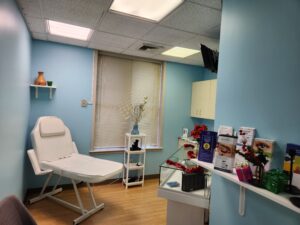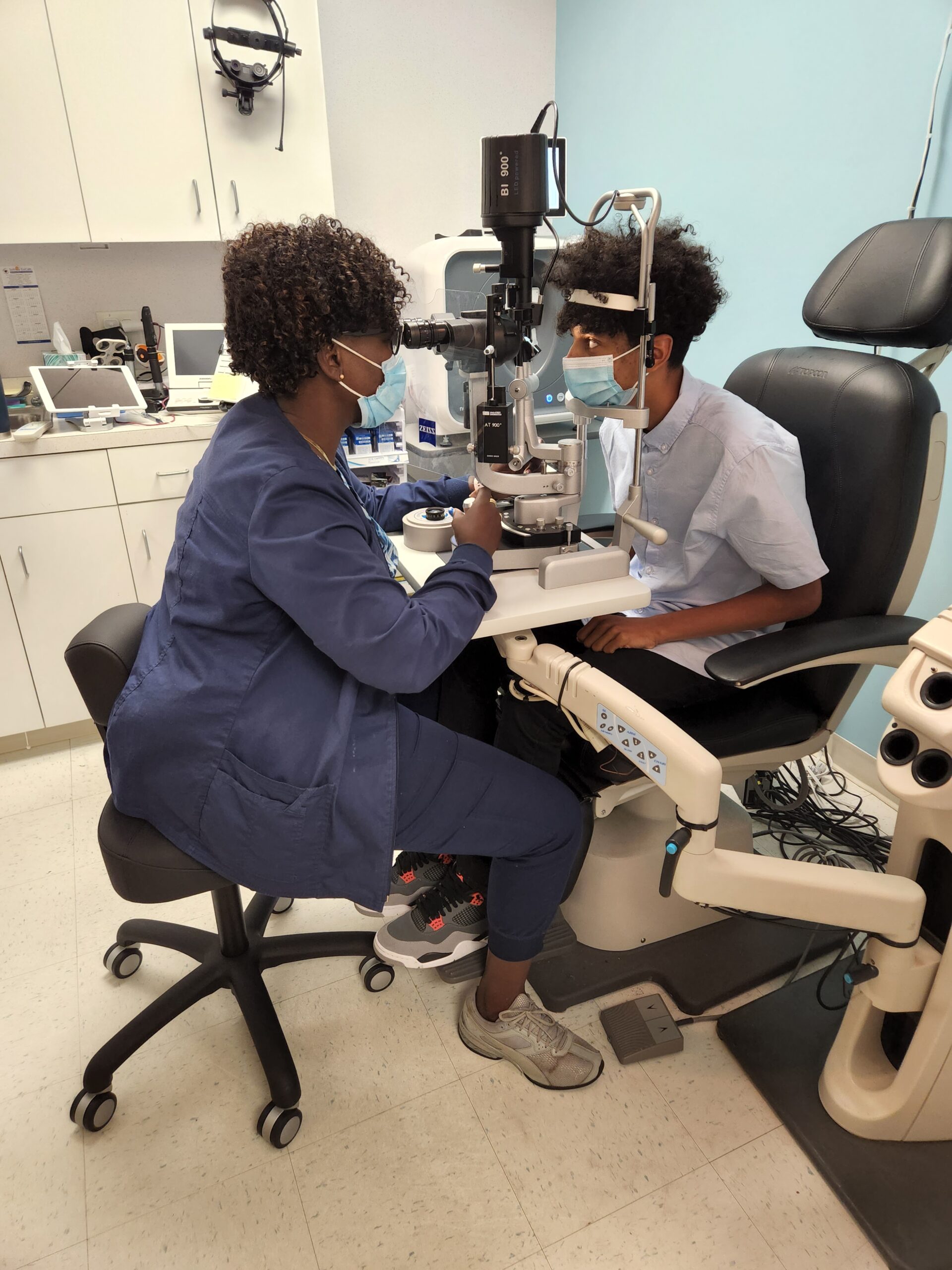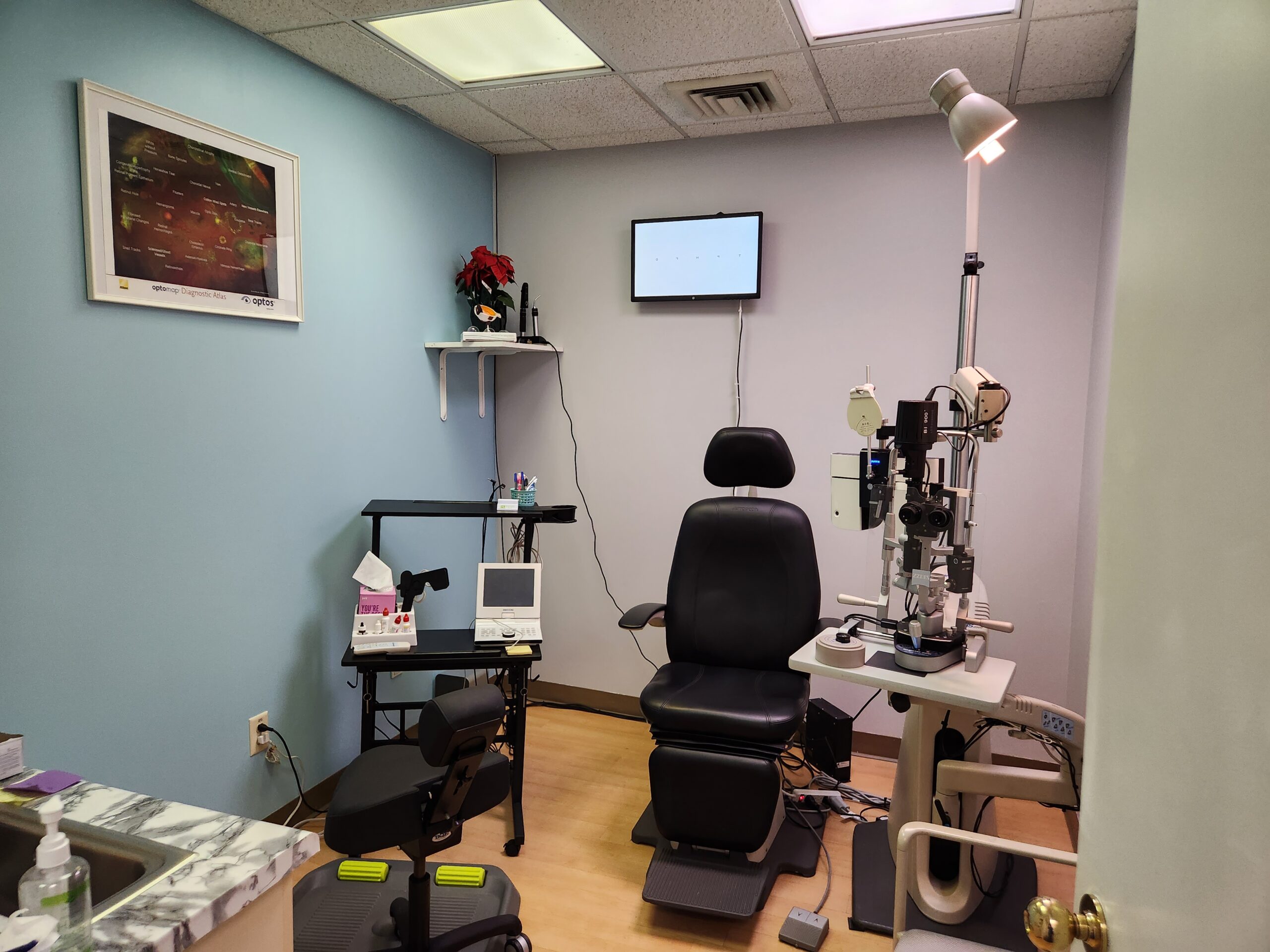
The medspa room in Dr. Dune’s new office. She says that the expanded space has allowed her to dedicate a room to dry eye treatments that sometimes have aesthetic side benefits.
By Barbara Dune, OD
May 31, 2023
When you expand office space, you can provide better care to patients with more instrumentation and the addition of doctors to the practice. You can improve the patient experience by providing a larger, more pleasing optical, and you can sometimes straighten out bottlenecks that cause greater-than-optimal wait times. When I moved into a larger space above my old office, I sought to improve care and patient experience, and at the same time, to grow the number of medical eyecare visits to our office.
The Old Space: Time to Move?
Two and a half years ago, I purchased an 800 square foot office space, which was perfect for the first years of a cold-start practice. I was able to create a pleasing, spa-like atmosphere and modest optical as I built a medical eyecare-focused practice. At around the two-year mark, however, I realized that, while our space suited us for the time being, there was not much room for growth in services or patients. I wanted to bring in an associate optometrist and add more instrumentation and have more space to serve our patients.
More Medical Eyecare Rooms & Another Exam Room
So, last year on our second anniversary, we moved up one floor in the same office building to a rented space that is 2,800 square feet. We are currently using 1,800 square feet of the new space. I am able to have two exam lanes now, one of which is fully outfitted and in use and the second is awaiting a slit lamp and digital phoropter.
I have an exam chair with a digital phoropter and slit lamp in the consulting room. I also have a movable desk-cart on which I have my laptop, tablet and other office essentials. I will be able to move this cart between the two consulting rooms once I have an exam lane in the other room. This will allow me to avoid having to purchase an additional laptop computer. I can call up images from the phoropter onto my laptop to aid me in further refracting the patient to refine the prescription. All my instrumentation is cloud-based, so I can call up all pre-testing images/scans on my laptop.
I now have a separate room with all of my pre-testing equipment and a low-vision room set up with magnifiers and other low-vision aids. In addition, we have a dry-eye treatment room and contact-lens room with trials and tables set up for contact-lens insertion and removal training. I plan to purchase an intense pulsed light (IPL) machine in the next 1-2 years for the dry-eye treatment room.
In total, I spent about $2,000 for exam-room renovations. The second exam room needs equipment. Only one exam room is ready to go right now with the needed equipment. I need to buy a digital phoropter and slit lamp for the second room, which will cost $17,000. I expect to have the patient numbers to justify that purchase, along with the addition of an associate to work out of that second exam room, by the end of 2024.
I have three staff members currently. If I want to add another doctor, I will need an additional technician to work up patients without having to pull someone from the front desk. I hope to make this addition to my support staff at the same time I hire an associate.
Dr. Dune’s old exam room:

And her new exam room:

New Lighting for Optical
We were able to move our frame board shelving from the downstairs office, so our major expense for the optical was investing in LED lighting. Moving the shelving and installing it in the new space cost around $1,000. Purchasing and installing the new lighting has cost us $2,800 so far. We started the lighting update in the optical, so that our products would be shown to their best effect, but within the next year, we would like to install new lighting throughout the whole office.
My low-vision practice, with many macular degeneration and glaucoma patients, requires great lighting in the exam room, as I want to demonstrate to patients the kind of lighting that they should have in their own homes to make it easier for them to see.
Room Devoted to Staff Training
In addition to having more room and facilities to treat my patients, I am working on having a better-trained staff. The new space has allowed me to devote a room just for staff training and meetings. Patients come into the office having Googled what they think they have. My staff needs to be educated enough to, in some cases, answer questions themselves, and in other cases, know what questions to direct to me, and call my attention to. I have a training manual available online, as well as in this training room, along with a library of books for my team.
We also will meet in this room with vendor reps, who provide training to my staff on their products and services.
Other Articles to Explore
ROI: The total spent on our new office space so far is $20,000. I expect to break even on that investment by the end of 2024, when I project that the additional exam room, and the growth of medical eyecare patients requiring multiple office visits each, will add 20-25 percent to the number of our patient visits.
There is a large Jamaican population near my office with a high incidence of glaucoma. Of all my services, glaucoma care has grown the most since starting the practice. Many of these patients are either recent immigrants, or those who have been here for a while, but have just gotten medical insurance. I’m diagnosing many new cases of not just glaucoma, but diabetic eye disease, in this population. This growing subset of my patient base will require multiple visits to my office every year.
I also expect that our patient base will grow once we add an IPL machine to our dry-eye treatment room. That treatment requires a minimum of four visits, which are out-of-pocket expenses to the patient. The technology will increase the effectiveness of treatment for my dry-eye patients while moving me toward being able to break even and profit from our new space.
In addition, I am adding new patients nearly every week from the work I continue to do in a community eyecare clinic, where I provide primary eyecare services. Whenever I diagnose a patient with a medical eyecare condition requiring further attention, which I am able to manage, I refer them to my practice for ongoing care.
I have an agreement in my lease of the new space that will give me an option to buy it in two years. The old office space is currently on the market. I’m hoping we can get that sold shortly, which would put me in a better position to purchase the new space.
 Barbara Dune, OD, of Serenity I Care in Hartford, Conn. To contact her: dunevision2020@gmail.com
Barbara Dune, OD, of Serenity I Care in Hartford, Conn. To contact her: dunevision2020@gmail.com





















